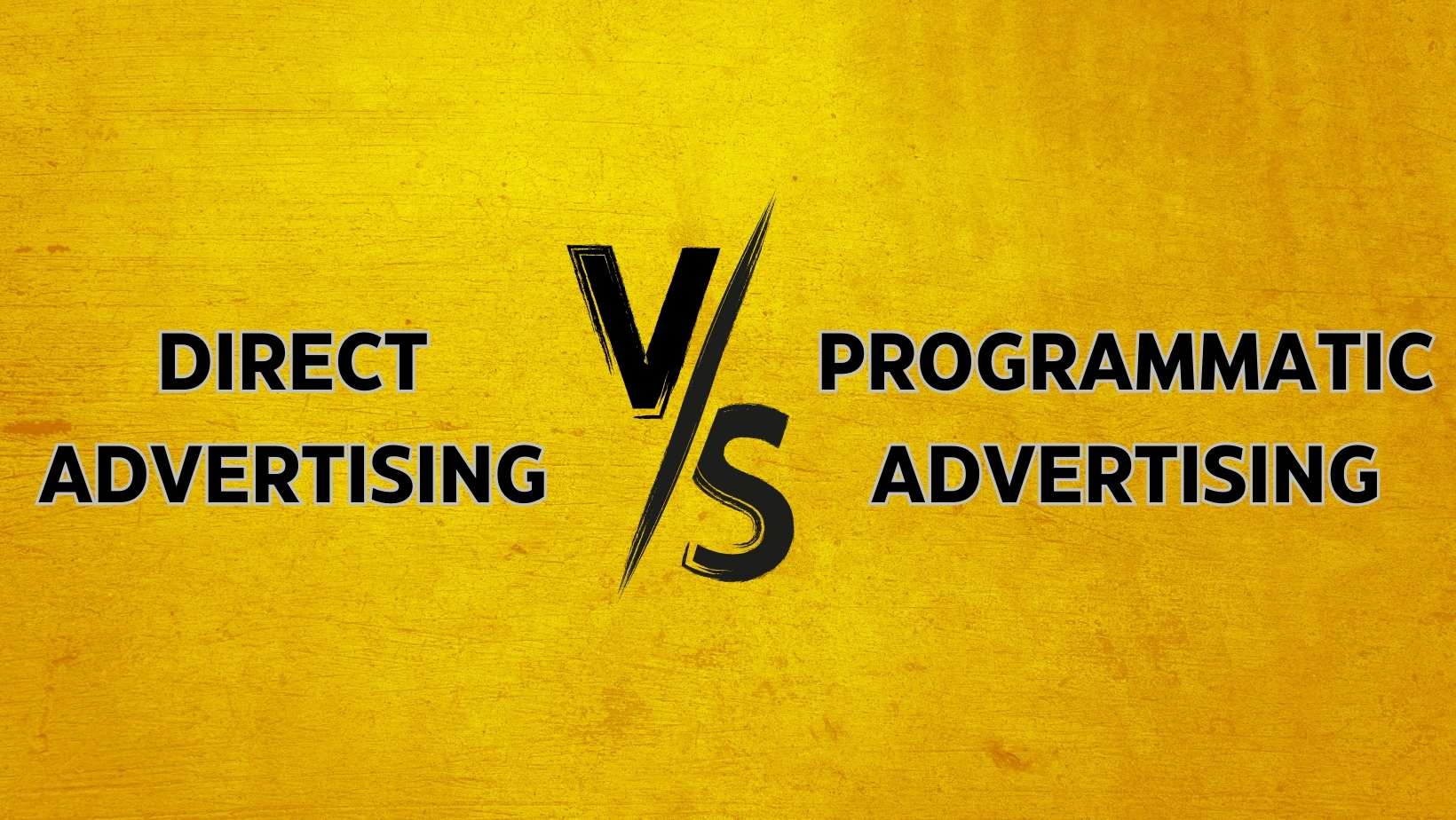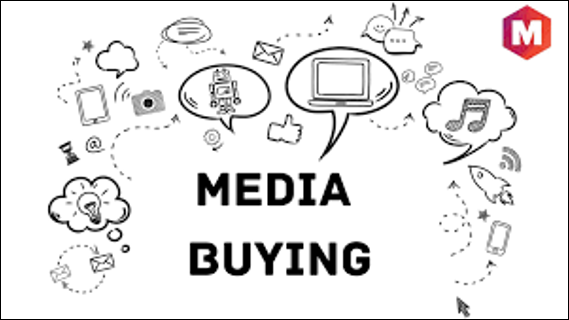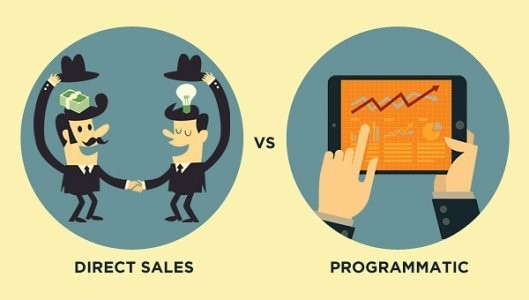
The world today is digital. Every action is done online or through digital channels. It is the same in the advertising and media buying space.
Digital media has overtaken “traditional media”. “Traditional media” comprises television, radio, print, and outdoor. “Digital media” includes websites, social media, streaming services, and apps.
An advertising agency fulfills two essential functions for its clients:
- Designing a communication for the client’s product or service
- Buying space in a media channel to place that communication and reach out to the audience that the client wants to reach.
The buying of space on these channels is done by media buyers who match the right channels with the audience and the message. Media buyers negotiate prices, ad placement, and scheduling of the ads.
This process of media buying has two forms today – direct and programmatic. Direct media buying can be used for both traditional and digital media. Programmatic buying is more useful in digital media. We will, however, explore direct and programmatic advertising in the digital ads space here.
Let us understand these two forms of advertising (or media buying).
Page Contents
What is Direct Advertising?
Direct advertising is where you, as an advertiser, connect directly with a media platform or channel to buy advertising space. The channel can be a traditional or digital platform. You contact the channel (publisher) directly and negotiate the media package (cost, duration, release date). This process is almost always face-to-face, and you can spend a lot of time finalizing the campaign details.
In direct advertising, you have to guarantee the ads, i.e., confirm that you will buy a fixed number of advertisements for a specified period.
While direct advertising can be pretty profitable for you as an advertiser, as you can negotiate the best prices and positions, it isn’t easy to scale up and customize rapidly.
Direct advertising is the only process possible for buying media in traditional media. This is done through a specialized agency, as we saw earlier.
What is Programmatic Advertising?
Programmatic advertising is the automation of buying advertising on online media. It uses algorithms, software, and data to automate and scale your ad-buying process. You can target your ad campaign and use your advertising budget far more efficiently with programmatic advertising.
Programmatic advertising does not require you to use an agency as a middleman to buy your ads.
The biggest advantage of programmatic advertising or buying is the scale of the media buying. Programmatic buying is done automatically through an ad-buying platform like Google DSP or Taboola. The process is done through a dashboard summarizing all the campaign information.
A typical programmatic dashboard looks like this:
Direct vs programmatic advertising – the key differences
Here are the key differences between direct and programmatic advertising:
- Buying Method: Direct advertising refers to purchasing ad inventory directly from publishers or websites. This involves manually negotiating prices, ad placements, and targeting options. On the other hand, programmatic advertising utilizes automated systems to purchase ad inventory in real time, using data and algorithms to determine the best ad placements and targeting options.
- Inventory Access: Direct advertising allows advertisers to access specific ad placements on particular websites, providing more control over the placement and context of the ad. Programmatic advertising offers access to a broader range of ad inventory across a network of websites, providing a wider reach and greater scale.
- Targeting Options: Direct advertising offers more customized targeting options, such as targeting specific demographics, geographic regions, or interests. Programmatic advertising offers more sophisticated targeting options, including real-time data analysis, behavioural targeting, and retargeting.
- Transparency: Direct advertising offers greater transparency regarding where the ad is placed and how much it costs. Programmatic advertising can be less transparent, with advertisers sometimes needing clarification about where their ads appear and how much they are paying.
In summary, direct advertising offers more control and transparency, while programmatic advertising offers more automation, scale, and sophisticated targeting options. Both approaches have their benefits and drawbacks, and choosing the right method will depend on your advertising goals, budget, and target audience.
When should you use direct v/s programmatic advertising?
You are not alone in trying to answer the direct v/s programmatic advertising choice. But these are not mutually exclusive.
As a savvy advertiser, you must use direct and programmatic advertising for different objectives and outcomes at different times.
Let us examine some use cases of direct vs programmatic advertising.
- Premium (targeted) placements: use direct advertising
- If you want to reach different audiences through one specific website (publisher), use direct advertising.
- In this case, the ads are contextual and are aimed at specific groups or sub-groups.
- Direct advertising also helps you place more targeted advertising.
- Non-premium (general) placements: use programmatic advertising
- If you want to reach the same audience through multiple publishers, use programmatic advertising.
- Programmatic advertising uses data and algorithms to match readers (visitors) to the ads.
- These ads are triggered by a visitor’s online search activity for a product or service.
- When the programme identifies a visitor on a page that matches the criteria you have given as an advertiser, it will show that visitor your ad.
- The same ad can be displayed across multiple websites and online channels.
- Deep monetisation strategy: use both direct and programmatic advertising
- This is perhaps the best strategy for your online ad campaigns
- Use the data from direct advertising to optimise your site for seasonal campaigns or different sub-categories
- Use programmatic data to identify other opportunities to promote your website

The growing importance of programmatic advertising
Programmatic advertising is playing a bigger role in the overall advertising mix today. This is due to the following reasons:
- Allows better targeting
- Programmatic advertising helps you to create more focused “layers” of audiences.
- You can visualise the impact of your advertising on one individual or a group of individuals.
- Better scale
- With programmatic you can buy inventory at a scale never imagined previously.
- Your advertising reach can also increase dramatically with programmatic.
- Better flexibility
- Programmatic advertising helps you adjust your campaign in real time.
- In the direct vs programmatic advertising discussion, this point is very important because the world is moving at lightning speed.
- Efficiency
- Programmatic makes your advertising spending more efficient.
- Even a small budget can go a long way in programmatic advertising.
The future of direct vs programmatic advertising
AdTech is being used to make advertising better for both advertisers and publishers; for this, direct and programmatic advertising must come together. You might want to avoid paying multiple sites to display the same ads, but prefer to centralise the buying at one place and pay one price for a basket of advertising inventory.
This leads to a “supply path optimisation” (SPO) development. SPO is nothing but the simplification of the entire online advertising process. It helps you as an advertiser to work better with publishers to find a single, efficient route to your audience.
We could soon see the end of the direct vs programmatic advertising debate.



